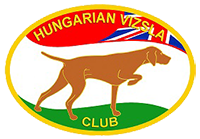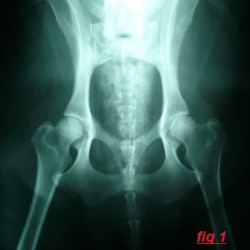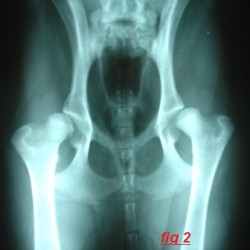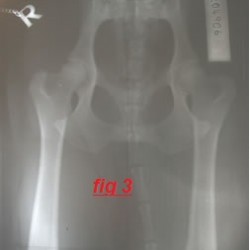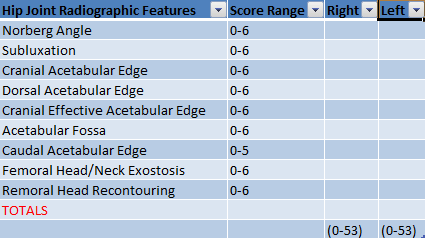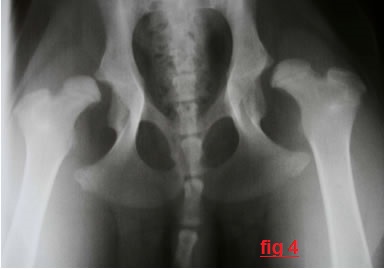Hip dysplasia is a common and often debilitating orthopaedic condition characterised by instability of the hip joint which affects many larger breed dogs. It is generally considered that puppies are born with normal conformation of the hip joint ie a smoothly fitting ball-and-socket joint comprising of the femoral head (ball) and the acetabulum (the socket). See Figure 1.
The mechanism by which dysplastic hips become lax and unstable is due to many factors but these include both genetic and environmental. The underlying cause is a laxity of the soft tissues supporting the hip joint; in severe cases this can be detected by your vet at first vaccination. However, because it occurs in young dogs when the bones are still partly cartilaginous so therefore soft instead of ossifying into a normal hard boney well fitting ball-and-socket conformation, the femoral head and acetabulum form a shallow, less congruous joint. Arthritic new bone also forms due to stresses on the soft tissue components of the joint and further remodelling changes occur. See Figure 2.
